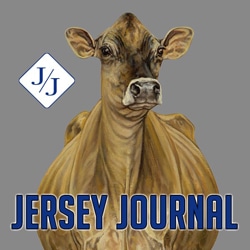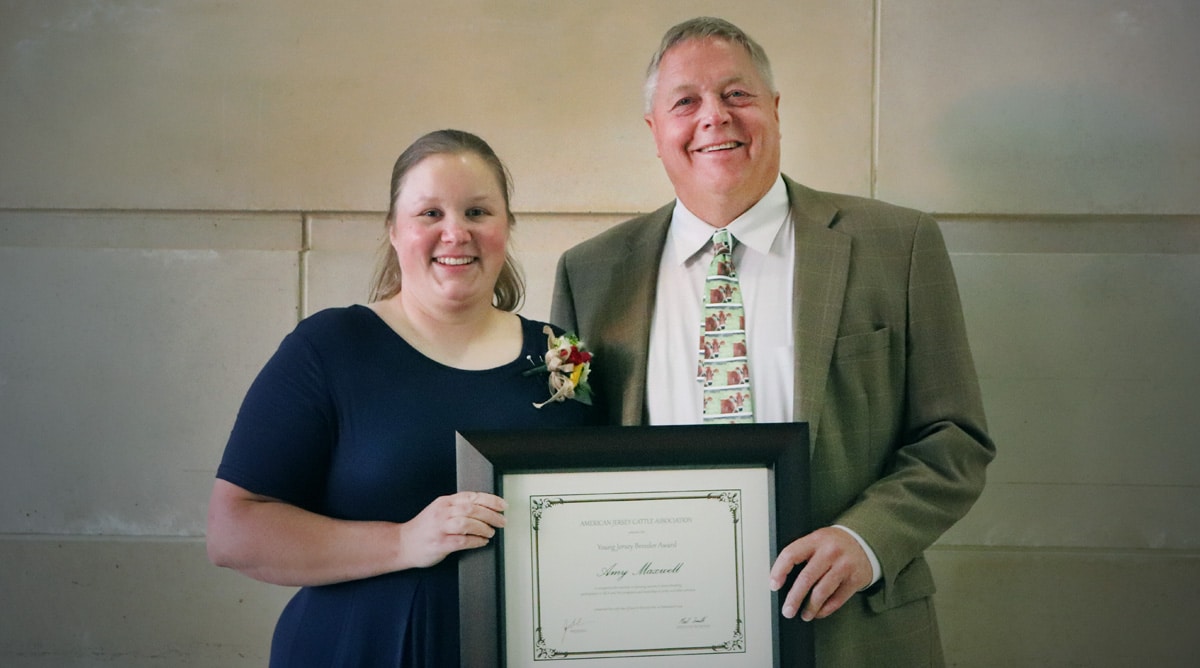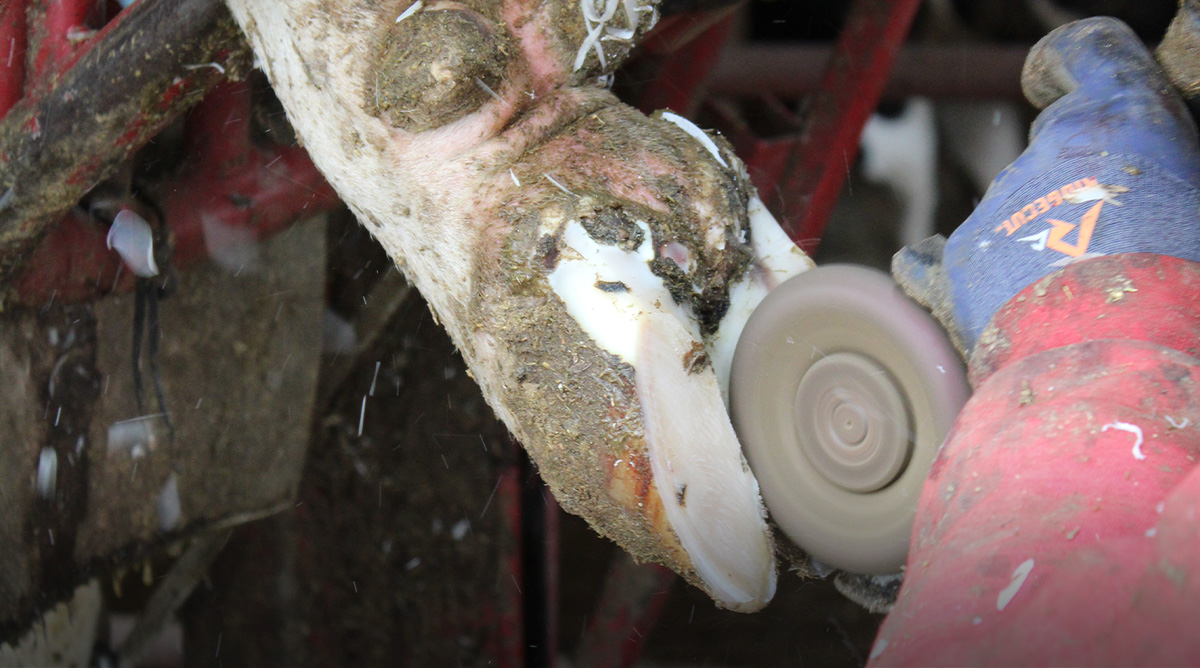Getting to Know AJCA Director John Maxwell
John Maxwell, Donahue, Iowa, is serving his first term as Director of the Eighth District of the American Jersey Cattle Association (AJCA). He was elected to serve in 2020.
Though he grew up on a small farm in the outskirts of Davenport, Maxwell and his family now operate Cinnamon Ridge Farms, an enterprise that raises corn and soybeans on 4,000 acres, manages a cow-calf beef herd, and operates a wean-to-finish hog business. In dairy circles, Cinnamon Ridge is known for its high producing herd of Registered Jerseys, on-farm cheese plant and thriving agri-tourism business that hosts more than 7,000 guests at the dairy each year.
The journey here, though, has been anything but easy and instantaneous. Maxwell started with little more than a college degree outside agriculture and a dream. On top of that, he spread his wings in 1984, a period in American agriculture known as the Farm Crisis. Turned down seven times for a loan to purchase a small farm, he found a believer in the eighth banker, dug in, and never looked back.
The Jersey Journal visited with John about the farm and business and his service to the dairy industry and local community.
What is your agriculture background?
I grew up on a small 80-acre diversified farm. We raised dairy and beef cows, chickens, pigs, sheep, and ducks. We milked Jerseys, Holsteins, and a few other dairy breeds. My mother was a teacher and my father a dairy farmer. It was an amazing experience for me.
I graduated from Davenport West High School and then continued my education at the University of Iowa. I come from a long line of dairy farmers and doctors, so followed the pre-med program through my sophomore year. At that point, I realized this was not on my heart. But when my dad said, “you aren’t doing anything unless you come home with a degree,” I switched majors and graduated with a degree in psychology. Though some may say I have never used my degree, I argue I use it every single day to operate my business.
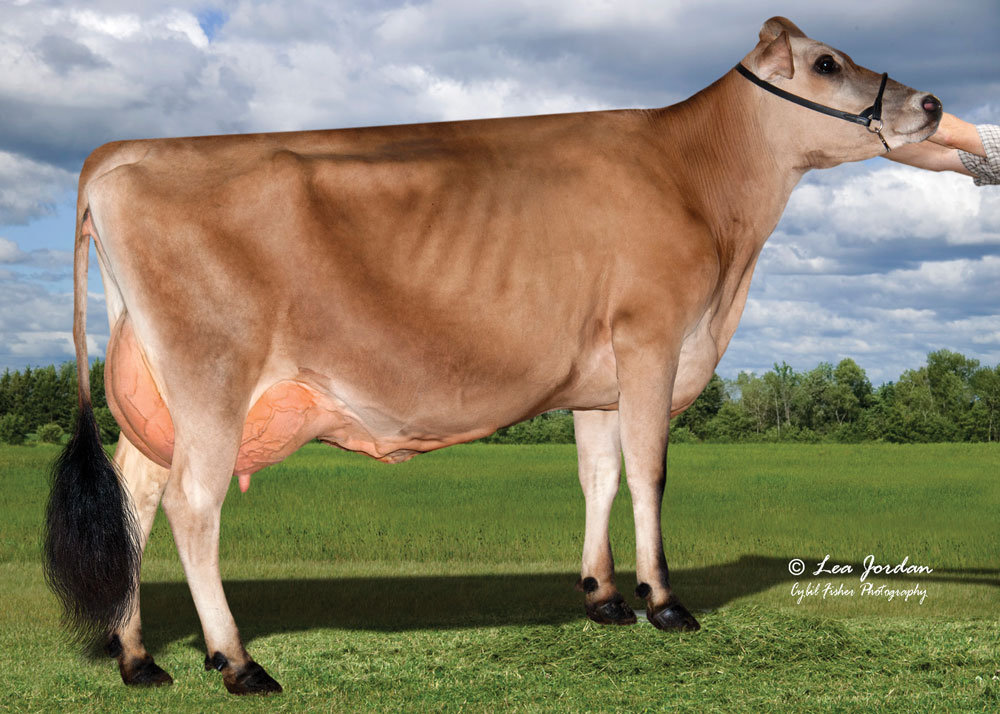
Explain your dairy operation.
I am a fifth-generation Jersey breeder farming in Scott County. In 1855, my great-great grandfather, a doctor and farmer, moved here from Ohio and started our agriculture heritage. He milked Jerseys.
And though dairy farming is in my blood, and I wanted to return to the farm after college, by dad had other ideas. He told me, “I have a farm. If you want one, you will have to get your own.” That was easier said than done. I found a 180-acre farm outside Davenport and was turned down seven times for a loan to finance the property. The eighth banker gave me money to finance the land at $800 per acre. Today that land is worth more than $17,000 per acre.
I also grew up building and fixing facilities and equipment, so was comfortable constructing my own tie-stall barn. We started milking cows in June of 1989 and continued to use the barn until 2008, when the cows were managed with another Jersey dairy herd. In June 2012, we built a robotic facility and moved the cows back home. In 2013, we started making Gouda and Cheddar cheeses on the farm too. The Jersey herd is about 200 milking cows and 250 replacement heifers. We also raise about 50 Jersey bulls and 50 Angus cows and finish 75-100 Jersey steers each year.
Amy generally takes care of the dairy and I handle the crops and financing.
Your herd has ranked among the top in the nation for production for several years. What do you attribute to that success?
First, we set a goal to be #1 in the nation for milk production. This was a lofty goal because we were near the bottom. We began making changes that helped us improve little by little. The nutritionist played a part. The agronomist and the veterinarian played a part. Amy, the straw who stirs the drink, played her part. Everyone together played a huge part.
Addressing little “things” was key to success. If there is a piece of trash to pick up, pick it up because the #1 farm in the nation picks up trash. Clean out the water tanks every week because the #1 farm has clean water because it knows clean water is the primary factor limiting production.
We hold quarterly barn meetings to discuss the good, the bad and the ugly at Cinnamon Ridge. Everyone involved with the dairy comes together to brainstorm how we can become better. Topics are all over the board, and nothing is off limits. Sometimes we reschedule a topic for the next meeting so research can be done. Our goals: make Cinnamon Ridge better and ensure everyone has a great day.
Though 40 years in the making, Cinnamon Ridge ranked #1 in the nation for protein production in 2017 and 2018 and #1 for both milk and protein in 2019 and 2020. This year, the dairy ranks first for actual milk and protein and second for fat with an average of 26,125 lbs. milk, 1,237 lbs. fat and 960 lbs. protein.
How do you utilize genomics at Cinnamon Ridge Dairy?
Today we genotype every single animal in the herd. But that has not always been the case. Amy and I had a conversation early in her college career. She wanted to come back to the farm. I told her she needed to do two things first: work for somebody else for at least a year and bring something back to the farm that will make a difference. She brought back genomic testing.
I’ll admit, I thought it was voodoo initially. I thought there was no way to predict how an animal would perform years down the road by DNA testing a few tail hairs. Another thing I have learned is to keep my mouth shut, let things play out, and never say “I told you so.”
In August 2016, Cinnamon Ridge Method Bulgaria was born and genotyped. She soon ranked as the #1 herd register female for genetic merit, and we sold her for $39,000 to Pine Tree Dairy, Marshallville, Ohio. The Steiners flushed her several times and have registered 32 progeny to date, many ranked for genetic merit or sold to A.I.
We bought “Bulgaria” from Pine Tree and brought her back to Iowa in November 2018 in calf to River Valley Cece Chrome-ET. She produced an actual senior two-year-old record of 25,780 lbs. milk, 1,613 lbs. fat and 1,209 lbs. protein and a protein m.e. of 1,380 lbs. to earn the 2020 President’s Trophy.
I learned another lesson: you better be using genomics if you are planning to do anything genetically with your herd, either advancing genetics or marketing them.
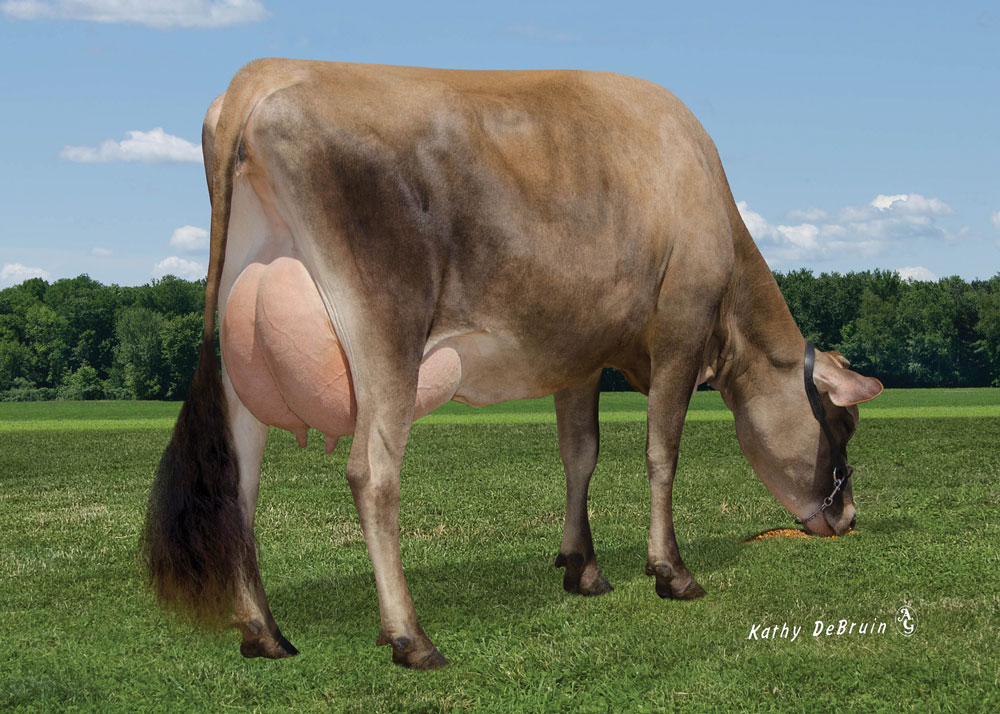
What AJCA programs do you use?
We use REAP because the programs in the package deal (registration, Equity, appraisal, and performance) are important to us. We also use JerseyMate to mate cows and heifers and JerseyTags for permanent identification.
How has your dairy diversified?
One of the new ventures that came with the new barn was cheesemaking in 2013. Cinnamon Ridge is one of the few dairies in the country to have cheesemaking equipment in the dairy barn. Cheesemaking accounts for a relatively small portion of our production, though. Our herd produces about 1,800 gallons of milk each day and we use 100 gallons of it to produce cheese. The rest is shipped to a cheese plant.
Another recent venture is Jersey beef. As a Jersey breeder, I have long been frustrated with the value of bull calves. Several years ago, I attended a seminar conducted by the AJCA on Jersey beef and came away believing we could develop a market here. I entered a carcass contest and earned Reserve Champion with my Jersey steer. It was one of just two of the 70 entries to earn prime. This was an eye opener to many and opened the doors for Cinnamon Ridge. We sell wholes and halves to local customers and wholesale to retailers and restaurants. We now butcher about two steers each week.
What do you enjoy most about being involved in the dairy industry?
I most enjoy talking to people about dairy and farming, be they neighbors or legislators and other policy makers. I also enjoy giving tours and staying relevant in this business. To have effective conversations, I need to be the one planting corn and milking cows. If I am not in the trenches, I know no more than they do.
Why is it important for us to stay connected with the public?
Dairy producers need to tune in to consumers because they purchase our product. Consumers need to know dairy products are nutritious and healthy. They need to know how they are produced. As well, consumers help to make laws for agriculture, so it behooves us all to have an educated voter. Regardless of farm size or farmer background, we all need to use our voices to tell our story.
Why did you decide to serve on the AJCA board?
Like many others, I wanted to know I made a difference. I have served on many different boards and volunteered for many causes over the years. My primary reason for serving on the AJCA board is to make a difference for the Jersey cow. I care deeply about her and the Jersey people. I hope my time, energy, and efforts honor those who have served before me and make things better for those coming after me. It would be a disservice if I did nothing and did not step up to the plate and give it my all.
Why is it important to connect with members while on the board?
Connecting and networking with others is how you get a feel for the heartbeat of the national Jersey organizations. You also gain perspective on what the organizations are doing well, and, more importantly, how they can improve. These are the same reasons we hold quarterly barn meetings. Viewing this from another angle, some of the best decisions I have made have come on the heels of a mistake and being receptive to learning.
What leadership roles have you held with other organizations?
I have served on at least 20 boards over the years. Outside the AJCA, I currently sit on two boards: the county board of supervisors and the local school board.
